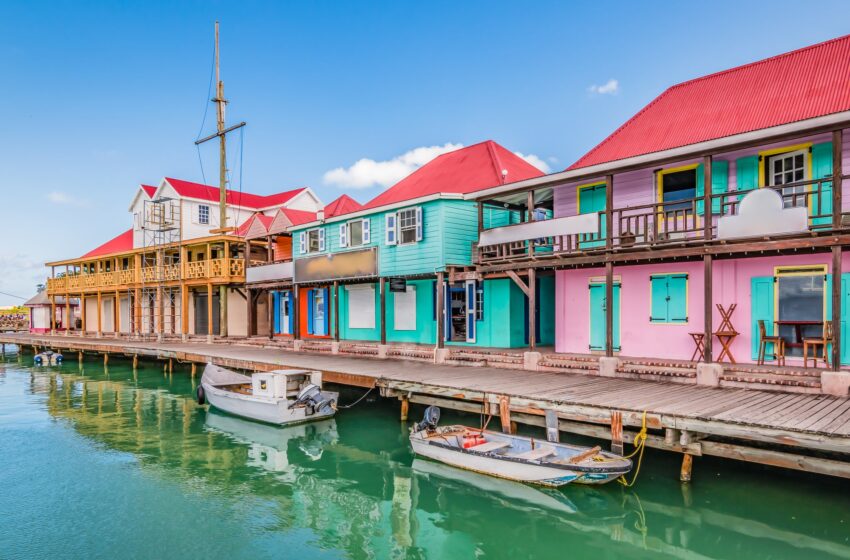
Antigua & Barbuda’s Only Travel Guide You Need For A Great Trip in 11 Easy Steps
- Destinations Americas
Cruisit Team
- April 28, 2022
- 0
- 4602
- 62 minutes read
Antigua & Barbuda’s Background
The Siboney people were the first to settle in Antigua and Barbuda about 2400 B.C., but when Columbus came on his second journey in 1493, the islands were colonized by Arawak and Carib Indians. Initial Spanish and French colonies were followed by the English, who established a colony in 1667. Slavery, which had been developed to manage Antigua’s sugar plantations, was abolished in 1834. In 1981, the islands gained independence as a member of the British Commonwealth of Nations.
Antigua and Barbuda (pronounced Antiga and Barbuda) culture is a prime example of a creole culture. It arose as a result of the blending of Amerindian (Carib and Arawak), West African, and European (mainly British) cultural aspects.
The two main islands that make up one nation are Antigua and Barbuda, located off the coast of South America, positioned between the Caribbean Sea and the North Atlantic Ocean. They are however encircled with numerous small islets. Because the islands have limited natural resources, tourism, together with investment banking and financial services, are the most important elements of the economy.
The bulk of visitors come to Antigua. Many come at the cruise ship port at St. John’s, the vibrant capital, where shopping, museums, and ancient buildings are the main draws. The island’s heritage as a vital naval harbor is preserved, and animal lovers may swim with friendly stingrays.
Although they say, “A no wantin tongue mek cattle can’t talk” which means, it’s sometimes wisest to keep one’s mouth shut, we can’t help but talk about the beauty of this Caribbean nation.
“Two Paradises make up Antigua and Barbuda
packs a punch of history and natural wonder“
When it gets down to it, the motives to admire Antigua are all linked to the island’s most famous features: its beautiful expanses of white and pink-tinged sand beaches, sailing, the 18th century Nelson’s Dockyard, its culinary specialities, and the Caribbean’s biggest breeding colony of frigate birds.
Antigua is larger and much more attractive to tourists. There are several high-end resorts on the island to satisfy people who come for a little of lavish leisure. Barbuda has lovely beaches as well, but the tourism infrastructure is far more restricted. The beaches are frequently uninhabited, and the fauna is spectacular. A big but shallow lagoon may be found on the island’s northeastern tip. A beach stretches for miles along its boundary. The frigate bird colony may be found in this lagoon. The beaches on the eastern side of the island are narrower, but there are some lovely cliffs.
The inhabitants of peaceful Barbuda is less than 2% of the residents of the islands. The tranquillity is prized by seclusion seekers and environment enthusiasts, while birders like the renowned frigate refuge.
The archipelago has a lot to offer visitors, including “a beach every day of the year,” as Antigua proudly asserts. If you stick with us, you’ll discover how the island has an easygoing charm, some of the nicest beaches in the Caribbean, and very welcoming people.
- Visit Nelson’s Dockyard and English Harbour for a taste of history.
- Take a flight above Montserrat Volcano.
- Between June and December, look for three different types of turtles. Mount Obama is named after former President Barrack Obama.
- Relax on one of tens of gorgeous beaches, such as Half Moon Bay.
- Discover the splendor of Redcliffe Quay.
- Shirley Heights has a Sunday afternoon music tradition.
- Snorkel the vibrant reefs of Antigua and Barbuda.
- Take a stroll down the lovely Fig Tree Drive.
- Antigua has only one airport, V.C Bird International Airport.
- There are two currencies in Antigua and Barbuda: the US dollar and the Caribbean dollar; be advised, you’ll be puzzled at ATMs if you believe you’re obtaining that greenback.
- Everyone on the islands is fluent in English.
- Many individuals opt to indulge in all-inclusive resorts, which are fantastic.
- Sunday nights at Shirley Heights are practically a requirement.
- Renting a car is a fantastic method to get about Antigua; British drivers should stay to the left.
- Applaud the islands for prohibiting the use of plastic bags! So go out and purchase yourself a reusable bag (Tote Bag)
- Holding aquatic creatures to snap shots is not prohibited, however it is frowned upon.
- Visas for the United Kingdom and the United States are not required for entrance; however, US nationals must provide evidence of a return ticket. Other nations should verify the visa requirements before traveling.
Although this is one of the safest Caribbean countries, there are still reasons to lock away your valuables and keep a close eye on your surroundings.
Most trips are uneventful, however there have been instances of serious crime such as murder, armed robbery, and sexual assault.
Maintain at least a minimum level of basic safety alertness as you would in your home country, and ensure that your lodging is safe.
Avoid certain areas in St. John when you feel like you’re on the “wrong side of the tracks” and immediately hit reverse (especially on foot).
Typically, December through April is by far the most popular period to travel; it’s the cooler and drier time of year in the Caribbean. Sun in the winter! Nothing except beautiful blue sky and limitless sun should be expected (This period is the high season, beaches get really bust and prices are significantly higher).
The months of May through June are referred to as the shoulder season since they are neither peak nor low season. Because Antigua Sailing Week runs from late April to early May, these spring months continue to draw a sizable audience.
In July and August, Antigua gets quite hot. The storm and cyclone season lasts from June through October, although September is the worst month. It is typically recommended to avoid travel between August and October because of the increased chance of storms, hence why they are off-season. Anyone who witnessed what happened in the Caribbean in late 2017 understands that storms in this region of the world are not to be taken lightly.
Temperatures, on the other hand, remain quite consistent throughout the year, and yes, we’re talking about 25-30 degrees all year in Antigua and Barbuda.
By Plane
You can arrive to V. C. Bird International Airport to go to Antigua and Barbuda. It is located on the island of Antigua, about 8 kilometers (5.0 miles) northeast of St. John’s, the main city. Many Airlines service this part of the world including Air Canada, American Airlines, Qatar Airways, Air Jamaica, and more.
By Boat
If you fancy traveling between destinations by sea, there are ferries, catamarans, private speedboats, and yachts to select from. There are various picturesque ferry routes connecting St. Vincent and the Grenadines, Antigua and Montserrat, and St. Martin and Anguilla. However, the services are subject to change, so always check beforehand.
English Harbour, Jolly Harbour, Deepwater Harbour, and Heritage Quay are the main ports of entry into Antigua. Private yachters can enter at St John’s Harbour on the west coast, English Harbour and the St. James Club on the south coast, or Crabbs Marina on the northeast coast.
By Car
If you’re curious, there are no roads leading to Antigua and Barbuda.
By Bus
Still don’t believe us, there are no roads leading to the islands of Antigua and Barbuda.
By Boat
The Barbuda Express departs from the ferry pier in St John’s harbour every day of the week (7 a.m. Monday through Saturday, and noon on Sunday), and costs $50 USD one way or $90 USD round trip.
The same firm also provides a day tour that includes transportation there and back as well as a local tour guide, boat tours to Codrington Lagoon and Two Foot Bay, lunch at Hillside View Bar & Grill, and a dip at Princess Diana Beach. The trip departs at 7 a.m. on Tuesdays and Thursdays.
Always check the schedule because the departure changes each day of the week, and sometimes certain seasons change them completely.
By Bus
If you want to live like the natives, there are tiny minibuses that link the major neighborhoods. You simply wave them down, and they normally charge roughly 3 EC Dollars (almost $1) for a short ride.
By Taxi
Taxis are also accessible in Antigua. Fares between the airport and English Harbour, as well as many hotels and destinations, are pre-set and may be obtained when you arrive. Antigua’s government sets the prices, and taxis do not use meters. Taxis aren’t inexpensive, but they’re the greatest way to explore Antigua because the drivers also serve as tour guides.
The majority of taxi trips depart from St. John’s and travel to English Harbour. Local Antigua taxi drivers charge based on where you’re leaving from and where you’re going. The longer your travel, the more expensive it will be. Fares often vary from $6 to $31.
By Car
Renting a car in Antigua and Barbuda might be expensive when get it from the center of the town; instead, get a car from the airport. Rates from carriers such as Budget start at $40 per day. When driving, keep an eye out for potholes and roaming donkeys, and avoid driving at night.
Regardless of your foreign or international driver’s license, you must get a temporary permit in Antigua. The good news is that they are inexpensive ($20 USD) and valid for three months.
It’s a good idea to have international car rental insurance, whether you choose for it or coverage from the supplier. Also, keep in mind that the speed restrictions in cities are just 20 mph, and 40 mph in the countryside. Enjoy simple journeys because practically everything is only a 40-minute drive away.
By Plane
Two flights operate from Antigua to Barbuda every day.
By Bike
Cycling is an alternative, but keep in mind that Antigua is highly mountainous, and many of the roads are rather rough.
SIM Card
There is a duty-free shop right behind customs (before baggage claim) that sells INET Mobile sim cards. It is the quickest and most affordable option to get a sim card when you arrive in Antigua, but it is still costly! The INET Mobile sim card costs $30 USD and only provides 1GB of data. Yet, we are sure it’s better than roaming charges.
Internet and WiFi
In Antigua, the average internet speed ranges between 4-5 Mbps for a residential network or normal café connectivity. However, for the digital nomad Antigua, higher wifi connections are also accessible.
You also have the option of purchasing a prepaid eSim card like from Airalo or Nomad. It is also possible to opt-in for a WiFi Hotspot from Solis.
Top Places in Antigua & Barbuda

Devil’s Bridge
The natural limestone, Devil’s Bridge, located inside the Indian Town National Park was formed over millennia by the hammering sea and is featured in the stunning landscape of the National Park, which is located along the rough northeast coast. During high tide, waves drive water geysers through blowholes in the adjacent rock.
The park also has several enjoyable treks and good birdlife. More than 36 bird species nest in the park’s acacia trees, and the park’s eastern end is thought to have been an Arawak campground.
Half Moon Bay
Half Moon Bay, located on Antigua’s southeastern tip, is surrounded by one of the Caribbean’s greatest beaches. This lovely strip of fine white sand and turquoise sea, surrounded by natural greenery and protected by a reef, provides great snorkeling on calm days. The surf can be rough when the wind is blowing.
Just off the beach, a little café provides refreshments and rents chairs and umbrellas. but there are no other luxuries.
Note: the beach is difficult to find, so a GPS will come in handy.


Nelson’s Dockyard National Park
Nelson’s Dockyard National Park in English Harbour is a popular tourist destination with a variety of attractions. Its greatest claim to fame is that it is the world’s only continually running Georgian dockyard — it is home to Antigua’s historic 18th-century British Naval Dockyard, which was added to UNESCO’s World Heritage List in July 2016.
During your stay, you may discover more about the dockyard’s illustrious past at The Dockyard Museum, which is housed in the historic Admiral’s House. However, you can take in the atmosphere by wandering around all of the wonderfully renovated stone warehouses, which stand in stark contrast to the glamorous superyachts in the harbor. The majority of these historic structures are now hotels, restaurants, boutiques, and galleries.
Stingray City
If you’ve had a lifelong phobia of stingrays, this exciting face-to-face trip should put your dread to rest. Stingray City, located five minutes by speedboat off the island’s east coast, is a tiny pool with a sandy bottom surrounded by a tropical reef, where hundreds of friendly southern stingrays swim through the crystal-clear waters eager to be fed by tourists.
You may stand, swim, or snorkel with them, depending on your degree of comfort, and then explore the nearby coral reefs. A highlight of this exciting trip is feeling their silky, satiny bodies brush across your flesh. Visiting Stingray City is amongst the most popular things to do on the isles.


Redcliffe Quay
Historic Redcliffe Quay, which overlooks St. John’s harbor, is one of the town’s oldest neighborhoods, dating back to the 17th and 18th centuries. It was a busy waterfront docking location back then, generally recognized as the Caribbean’s commercial and trading center. Between Antigua, Europe, and Africa, it was the principal commercial port for slaves, rum, sugar, and coffee.
Today, it is a tranquil and quiet sanctuary overlooking the sea, the ideal spot to escape the heat and bustle of St. John’s. You may watch the yachts and boats come and depart from the harbor or marvel at the massive cruise ships that visit the island often during the season. The Former slave compound is now a shopping district with some of the finest stores and restaurants on the island.
Frigate Bird Sanctuary
The Frigate Bird Sanctuary on Barbuda is a birder’s paradise. The bird sanctuary, which is only accessible by boat, is located in Barbuda’s northwest lagoon and is home to one of the Caribbean’s largest nesting colonies of frigate birds.
These big seabirds are distinguished by their brilliant red gullets and 1.5-meter wingspan. The area also draws over 150 additional bird species, including herons, cormorants, and pelicans.
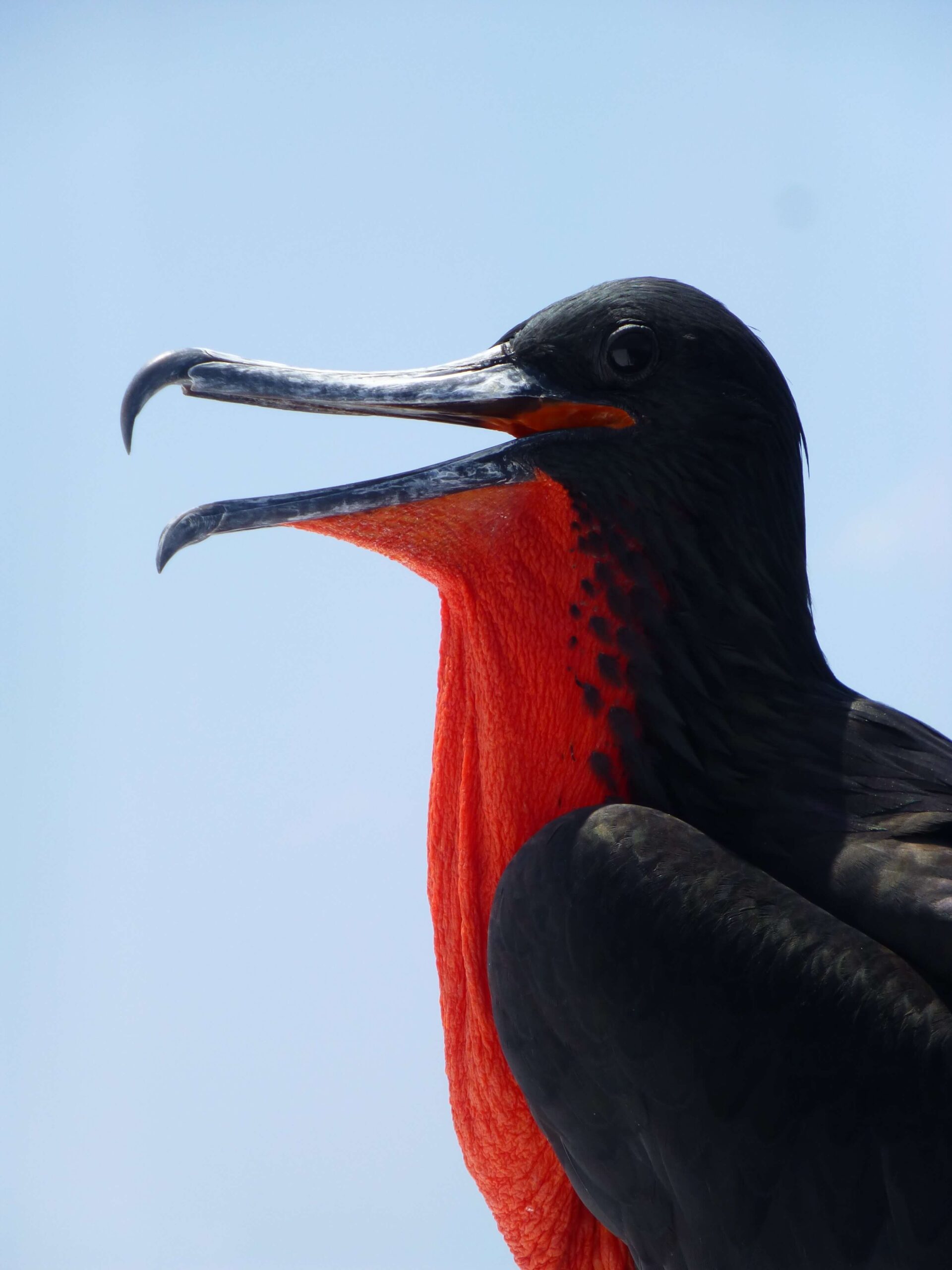
7-day Itinerary in Antigua & Barbuda (with extension options)
Days 1
Arrive in St. John
If you arrive early on a Sunday, check-in and hop on the road. Start at Shirley Heights. A tasty BBQ is accompanied by a steel drum band, as well as dancing and spectacular sunsets. After nightfall, local party bands will keep you entertained all night, attracting both tourists and locals and offering lots of opportunities to meet and socialize. The majority of guests carry cameras to record the sights and sunsets.
After ending your night at the heights, you can still have time to witness St. John’s nightlife. When all is done, get back to your hotel and rest, a long day is ahead of you the next day.


- Backpacker:
- Budget:
- Mid-range:
- High end:
Constantine is regarded as somewhat safe for foreigners. But take your precautions, especially as a solo woman traveler. You may want to have a guide or a taxi with you for the entirety of your stay there.
By Cab
or
By Bus


Days 2
Explore the history
Have breakfast and start your day relatively early at Nelson’s dockyard, you can easily spend all day here emerging yourself in the history and cultural experience. If you don’t want to spend a whole day in just one place, we recommend you start moving to the Pillars of Hercules.
The Pillars of Hercules are one of the most distinctive features of an Antigua vacation. Because of its proximity to Nelson’s Dockyard, you’ll most likely be there in a flash. These bizarre geological structures were naturally carved onto the rock face by continuous wind, rain, and smashing waves.
When you’re done take the old road and of to Ffyers Beach, one of the most turquoise waters around the island, relax, embrace the sun, and take it slow until sunset. When nighttime comes, head to town for another nightlife experience. Then head back for a night’s rest.
Days 3
A day in the Eastside
Your next day starts at Devil’s Bridge early in the morning to catch the sunrise view there. Have your breakfast items ready to be able to move quickly. Otherwise, you can still enjoy it there, after sunrise.
Another remarkable geological formation in a remote and wild location is known as Devil’s Bridge for a reason. The natural arch, carved by the sea, demonstrates the geological makeup of the region, as water eroded away the soft ledge of limestone, leaving only the hard strata. Several natural blowholes in the rock surround the bridge, with spouting water shoots announcing the strength of the Atlantic. Due to the lack of land or offshore reefs between here and Europe, as well as strong trade winds, the water is constantly turbulent, so please take caution.
When you’re done marveling at Devil’s Bridge, start heading to Stingray City. These lovely creatures are thought to have been originally attracted to the sand bars by fishermen gutting and cleaning their fish, the stingrays still congregate here, though the fishermen are replaced by tourists armed ready to feed them squid. Observe these amazing creatures as they move majestically around the water. You’ll be standing in clear and shallow waters in the open ocean, and will be briefed on how to interact properly with creatures. Please do not carry them.
After enjoying your time with the rays, head to Betty’s Hope, the remnants of the island’s first significant sugar plantation, which is an important Antiguan historical landmark. For decades, the plantation exploited slave labor in the large-scale production of sugar, which was established in 1650 during the years of British colonial administration. Visit on your own or on a tour; consider reading up on the history before as the signs may not cover all of the sophistication.
Conclude your day by kicking back wherever you like back in town and have a good night’s rest to be ready for your next day.
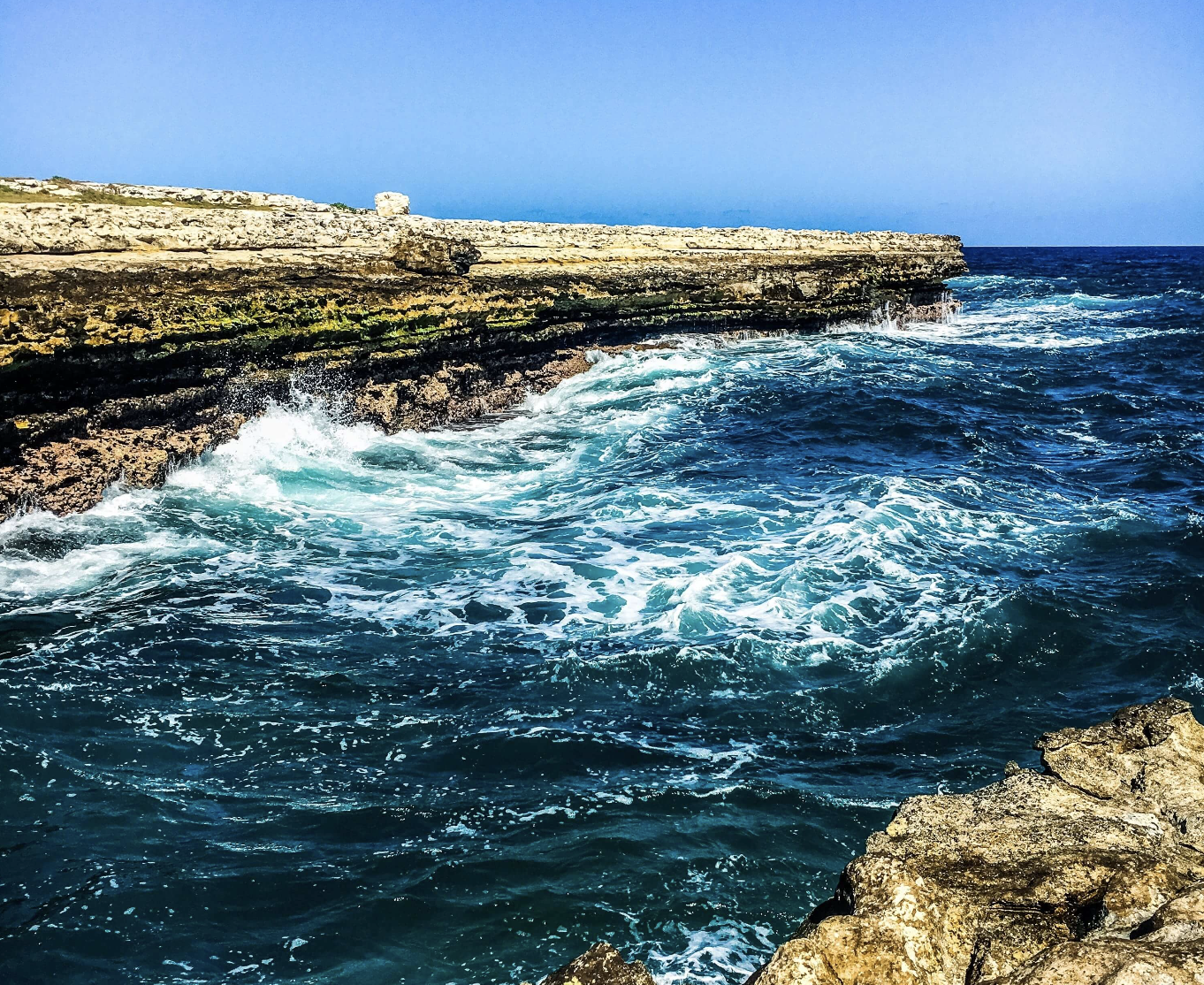


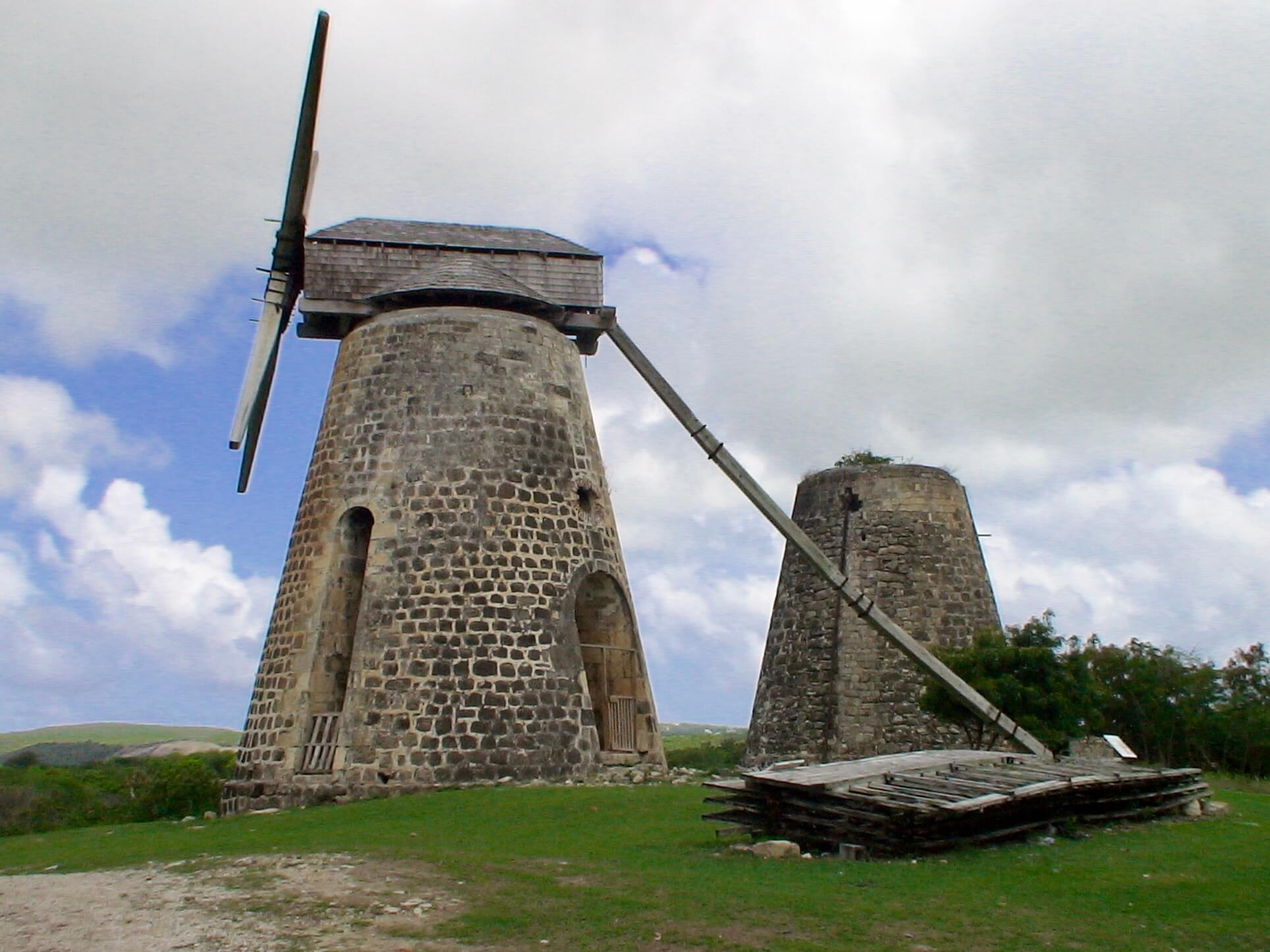



Days 4
A sea day!
After breakfast, take a boat and head to Hell’s gate. We have no idea what’s up with all the Devils and Hells on this paradise of an island, but this natural geological wonder will surely put you in awe.
When you’re back to the mainland, start moving to Half Moon Bay, a curving span of sparkling pink sand, that symbolizes one of the region’s less-developed coastal areas, allowing visitors to escape the congestion of bigger beaches and experience their own private spot. A massive reef protects the bay from the harsher Atlantic seas, and the brilliant turquoise waters are ideal for swimming and snorkeling. There are no sun loungers here, so bring a towel if you want to soak up some rays.
Spend the rest of your day at Half Moon Bay, unless you want to drop a deuce, you’ll likely want to head back to your accommodation because although there might be some local merchants selling drinks on the beach, there are no facilities like a restroom. Get back to your hotel and you can spend some time at night making friends and having fun.
Days 5
Turtles? Diving?
If you’re done with your breakfast and in luck to be in turtle season from June to December, head to Galleon Beach. This beach does not only offer a chance to swim along turtles, but also dive and explore shipwreck sites.
When you’re done, head to Dickenson Bay if you’re looking for a popular, busy beach with plenty to do and see, check out Dickenson Bay. The shoreline boasts a large number of resorts, restaurants, bars, and a wide selection of water sports. The long white beach offers plenty of room for sunbathing, and the calm waters are great for swimmers of all levels. If you prefer to explore, go island hopping along the string of uninhabited islands just offshore. Take your snorkeling gear if you want to stop on the coral reef and view the marine life up close.


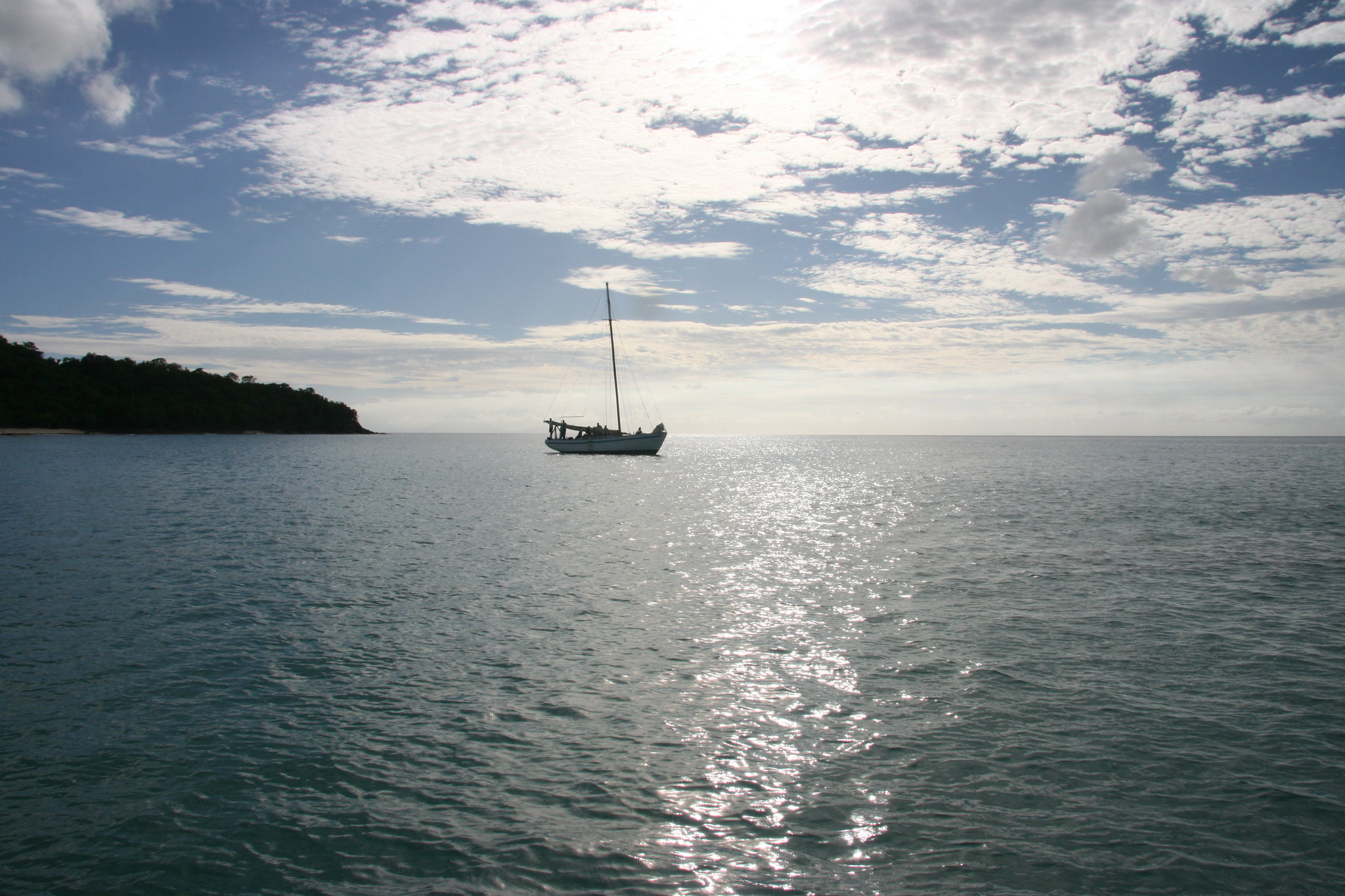


Days 6
Barbuda
Wake up super early, and after a lovely breakfast, head to the Antigua Barbuda ferry service. Take the Barbuda Express which is an innovative wave-piercing catamaran giving maximum passenger comfort at high speed.The journey time is around 90 minutes to Barbuda. There’s an alternative to taking a boat which involves a 7 seater plane that operats twice a day. Depending on the service schedule whether boat or plane, make sure you are able to fit it in within your itinerary. You might want to take the flight at night the day before and book accommodation.
When you’re done with your day trip, or sleepover, try to catch the boat as early as you can so you could catch a glimpse of the beautiful Redcliffe Quay before sunset. Walk along the promenade and enjoy the views of vibrantly colored buildings, turquoise water in Green Bay, and small boats and large cruise ships parked in the water at Redcliffe Quay. Once a trading place for slaves, rum, sugar, and coffee, today the quay features an abundance of brightly colored cafes, restaurants, and small boutique shops housed in old Georgian buildings, restored to their original form.
- Backpacker:
- Budget:
- Mid-range:
- High end:
Days 7
Departure
This day is your last here, pack your things, check out, and head to the Airport. If you still have time, you may want to say your last goodbyes. But, who knows, this destination may be frequented by you more.
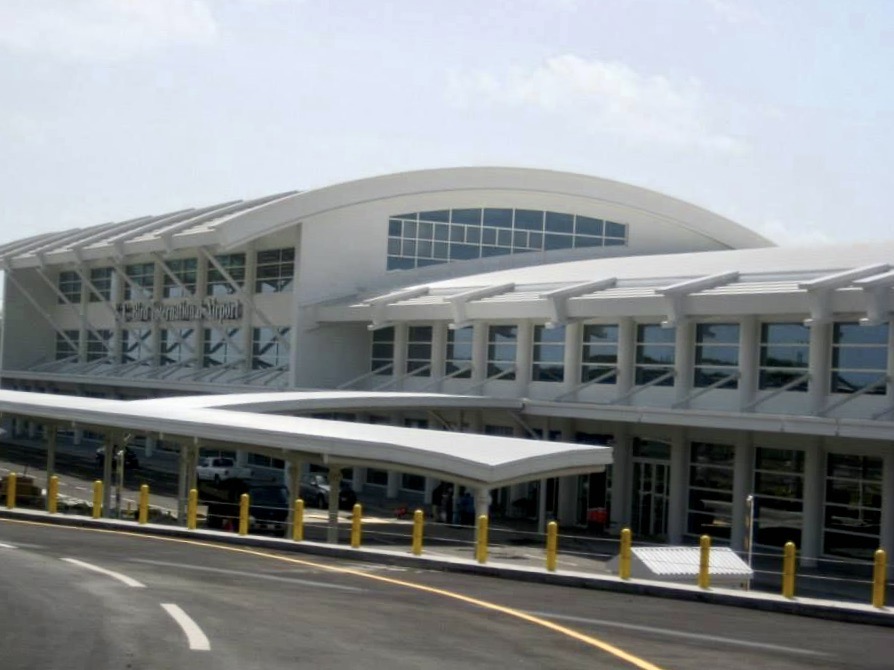
The Most Popular Food in Antigua & Barbuda
Many native dishes have a West African influence, as is typical of most Caribbean islands, as well as more surprising inspiration from countries like China, India, Syria, Lebanon, and even Jamaica. Antigua cuisine is also influenced by Spanish and British cuisine. The cuisine on the isle isn’t spicy, which is likely due to Spanish and British influence following their arrival.

Goat Water
This is perhaps one of the oddest names for a dish you’ve ever heard, yet goat water exists and is very popular in the Caribbean. It’s a light soup made with almost every part of goat flesh you can think of, including bones. Herbs and spices like cinnamon and clove are used, as well as dumplings, yams, potatoes, and other ingredients. Goat water is typically consumed at breakfast time, and several local restaurants provide it. Keep in mind that this meal is rather filling!

Jerk Chicken
Jerk chicken instantly brings to mind Jamaica, and it is one of several dishes that initially acquired popularity in Jamaica before spreading to the other islands. Jerk chicken requires a lengthy preparation procedure, which includes the use of dry rubs for flavor and the addition of spicy homemade sauces. Jerk chicken can be found almost anyplace in Antigua, and your chances of happiness are strong because most individuals follow the slow cooking procedure, which results in a soft and tasty dish.

Souse
Souse is a chilled, light meal with resemblance to soup and ceviche. It is normally made with pickled pig (beware), although it may also be found with chicken in some establishments, so inquire beforehand if this is a problem. Souse is seasoned with various peppers, onions, lime, and a handful of spices to give it a bit of a kick while cooling you down on a hot day, with a light, transparent broth as its basis. Souse may be precisely what you need if you’re shopping in Antigua and need a quick pick-me-up.

Conch
Travelers looking to try something new will like Conch and all of the different ways they’re prepared. Conch in Antigua is delicious and has a texture between clams and calamari, having been caught in the island’s own warm seas. Conch may be found in chowders, curries, ceviches, or battered and fried into fritters at various vendors and small eateries in Antigua. While on the island, try all of the versions.
Conch fritters are the voyager’s favorite, and you can count on them to be deep-fried to perfection. On a hot Antigua day, it’s difficult to match the freshening and light taste of conch ceviche served alongside a chilled beverage of your choice.

Ducana
Ducana is about as traditional as you can get. It’s a sweet potato dumpling or pudding that almost everyone who tries it falls in love. You’ll probably enjoy it as well! They are produced with a variety of ingredients, including grated sweet potatoes, grated coconut, sugar, flour, and coconut milk. They are then wrapped in a banana leaf and cooked in water. This recipe is sweet and acidic, so it pairs well with savory options like stewed saltfish.
Conch fritters are the voyager’s favorite, and you can count on them to be deep-fried to perfection. On a hot Antigua day, it’s difficult to match the freshening and light taste of conch ceviche served alongside a chilled beverage of your choice.

Tamarind Balls
Can you say no to the sweet and sour flavor of tamarind? These treats are believed to have originated from Jamaica and are extremely popular today in many destinations in the Caribbean. These are basically tamarind pulp bites that are occasionally spiced or just enveloped in sugar. Take some home to enjoy with friends and family.
What's the Travel Budget in Antigua & Barbuda?
Flights
- Flights start at roughly $200 from nearby countries. Tickets however on average cost around $700 and can cost more depending on which class and from which country you depart.
Accommodation
- Nomad Backpacking style travelers can expect to spend around $450 for a week
- Budget travelers can expect to spend around $630 for a week
- Mid-range travelers can expect to spend around $1260 for a week
- Luxury travelers can expect to spend around $3000 for a week
Food Budget (Three meals and drinks)
- Nomad Backpacking style travelers can expect to spend around $25 per person per day
- Budget travelers can expect to pay around $35 per person per day
- Mid-range travelers on average would cost $50 to $70 per person per day
- Luxury travelers can expect to pay around $120 to $160 per person per day
Overall Budget Styles (Not including Flights, Tours, Transportation, or Car Rental)
- Nomad Backpacking style travelers can expect to spend around $700 for a week
- Budget travelers can expect to spend around $1000 for one person for a week
- Mid-range travelers can expect to spend around $1800 for one person for a week
- Luxury travelers can expect to spend around $4200 for one person for a week
Flights
- Flights start at roughly $200 from nearby countries. Tickets however on average cost around $700 and can cost more depending on which class and from which country you depart.
Accommodation
- Nomad Backpacking style travelers can expect to spend around $450 for a week
- Budget travelers can expect to spend around $630 for a week
- Mid-range travelers can expect to spend around $1260 for a week
- Luxury travelers can expect to spend around $3000 for a week
Food Budget (Three meals and drinks)
- Nomad Backpacking style travelers can expect to spend around $25 per person per day
- Budget travelers can expect to pay around $35 per person per day
- Mid-range travelers on average would cost $50 to $70 per person per day
- Luxury travelers can expect to pay around $120 to $160 per person per day
Overall Budget Styles (Not including Flights, Tours, Transportation, or Car Rental)
- Nomad Backpacking style travelers can expect to spend around $700 for a week
- Budget travelers can expect to spend around $1000 for one person for a week
- Mid-range travelers can expect to spend around $1800 for one person for a week
- Luxury travelers can expect to spend around $4200 for one person for a week
Flights
- Flights start at roughly $200 from nearby countries. Tickets however on average cost around $700 and can cost more depending on which class and from which country you depart.
Accommodation
- Nomad Backpacking style travelers can expect to spend around $450 for a week
- Budget travelers can expect to spend around $630 for a week
- Mid-range travelers can expect to spend around $1260 for a week
- Luxury travelers can expect to spend around $3000 for a week
Food Budget (Three meals and drinks)
- Nomad Backpacking style travelers can expect to spend around $25 per person per day
- Budget travelers can expect to pay around $35 per person per day
- Mid-range travelers on average would cost $50 to $70 per person per day
- Luxury travelers can expect to pay around $120 to $160 per person per day
Overall Budget Styles (Not including Flights, Tours, Transportation, or Car Rental)
- Nomad Backpacking style travelers can expect to spend around $700 for a week
- Budget travelers can expect to spend around $1000 for one person for a week
- Mid-range travelers can expect to spend around $1800 for one person for a week
- Luxury travelers can expect to spend around $4200 for one person for a week
Flights
- Flights start at roughly $200 from nearby countries. Tickets however on average cost around $700 and can cost more depending on which class and from which country you depart.
Accommodation
- Nomad Backpacking style travelers can expect to spend around $450 for a week
- Budget travelers can expect to spend around $630 for a week
- Mid-range travelers can expect to spend around $1260 for a week
- Luxury travelers can expect to spend around $3000 for a week
Food Budget (Three meals and drinks)
- Nomad Backpacking style travelers can expect to spend around $25 per person per day
- Budget travelers can expect to pay around $35 per person per day
- Mid-range travelers on average would cost $50 to $70 per person per day
- Luxury travelers can expect to pay around $120 to $160 per person per day
Overall Budget Styles (Not including Flights, Tours, Transportation, or Car Rental)
- Nomad Backpacking style travelers can expect to spend around $700 for a week
- Budget travelers can expect to spend around $1000 for one person for a week
- Mid-range travelers can expect to spend around $1800 for one person for a week
- Luxury travelers can expect to spend around $4200 for one person for a week
If you want to know what to pack, read this list below:
- This is a casual island country that can get extremely hot, dress accordingly
- Raincoat or Light Waterproof Jacket
- Hiking Boots or Sturdy Sneakers (Shoes You Don’t Mind Getting Wet)
- Sunscreen
- Insect Protection – Repellent and Clothing
- Sunglasses and Sun Hat
- Water Shoes
- Beach Towels/Sarong
- Dry Bag
- Money Belt or Cross Bag
- Portable Medical Kit
- Flashlight or Headlamp
- Copies of your passport.
- Get all the needed vaccinations before traveling
- A power bank is a must in any travel.
- Always have some cash with you just in case there are no ATMs and if you are dealing with a business that solely accepts cash
- Get yourself an adapter for your gadgets
- 1 toothbrush
- 1 tube of toothpaste
- 1 razor
- 1 package of dental floss
- 1 small bottle of shampoo
- 1 small bottle of shower gel
- 1 towel
- Deodorant
- Band-Aids
- Hydrocortisone cream
- Antibacterial cream
- Earplugs
- Tylenol
- Hand sanitizer (germs = sick = bad holiday)
- A key or combination lock
- Zip-lock bags
- Plastic bags (great for laundry)
- Universal charger/adaptor
- LifeStraw (A water bottle with a purifier)
- 1 dry shampoo spray & talc powder
- 1 hairbrush
- Makeup you use
- Hairbands & hair clips
- Feminine hygiene products
Clothing For Boys
- 1 pair of jeans or khaki pants
- 1 pair of shorts
- 1 bathing suit
- 5 T-shirts
- 1 long-sleeved T-shirt
- 1 pair of flip-flops
- 1 pair of sneakers
- 6 pairs of socks
- 5 pairs of boxer shorts
Clothing For Girls
- 1 swimsuit
- 1 sarong
- 1 pair of stretchy jeans
- 1 pair of leggings
- 2-3 long-sleeve tops
- 2-3 T-shirts
- 3-4 spaghetti tops
- 1 light cardigan
Want to plan your own trip, here are some of the best resources that can help you
- Skyscanner – They search small websites and budget airlines that larger search sites tend to miss. They are hands down the number one place to start.
- Momondo – This is another favorite flight search engine because they search such a wide variety of sites and airlines. Always check here too.
- Booking.com – The best all-around booking site that constantly provides the most affordable and lowest rates. They have the widest selection of budget accommodation.
- Couchsurfing – This website allows you to stay on people’s couches or spare rooms for free. It’s a great way to save money while meeting locals who can tell you the ins and outs of their city. The site also lists events you can attend to meet people (even if you’re not staying with someone).
- Intrepid Travel – If you want to do group tours, go with Intrepid. They offer good small group tours that use local operators and leave a small environmental footprint.
- Grassroots Volunteering – For volunteering, Grassroots Volunteering compiles a list of good local volunteer organizations that keep the money within the community.
- Get Your Guide – Get Your Guide is a huge online marketplace for tours and excursions. They have tons of tour options available in cities all around the world, including everything from cooking classes, walking tours, street art lessons, and more! It has the world’s largest collection of things to do with more than 30,000 activities in 7500 destinations.
- SafetyWing – Safety Wing offers convenient and affordable plans tailored to digital nomads and long-term travelers. They have cheap monthly plans, great customer service, and an easy-to-use claims process that makes it perfect for those on the road.
- Trip Advisor: Check the reviews and then book your accommodation. TripAdvisor is where you go when you want to compare prices with multiple accommodation providers.
- VRBO: is the main search engine to use when you are looking for a home or apartment rental. It can sometimes be cheaper than hotels and it is the best way to stay in areas that offer a more local feel.
- Hostelworld: With one of the largest databases of hostels in the world, Hostelworld is the go-to site when you are looking for budget accommodation.
- Rome 2 Rio: If you want to see how to get somewhere by plane, train, bus, ferry, or car Rome2Rio lays it all out for you as well as related costs.
- World Nomads Insurance: When traveling you should always have travel insurance. We have found the best bang for your buck is by far World Nomads.
Final Thoughts on Antigua & Barbuda
Antigua and Barbuda is definitely one beautiful Island nation that is worth traveling to. Would you?
If you’ve been to Antigua and Barbuda let us know how your trip was in the comments below.